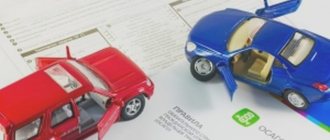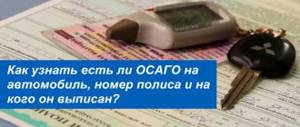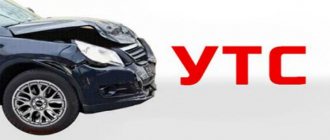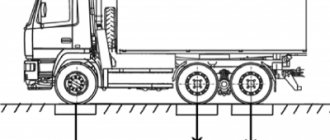Home/OSAGO/Increasing coefficient of MTPL after an accident
The law obliges citizens to purchase a compulsory motor liability insurance policy. Without it, you will not be able to get on the road while observing traffic rules. For insurers, selling a policy is an additional way to earn money. However, it is beneficial for organizations to only work with customers who do not have accidents. If an accident does occur, this will affect the cost of the MTPL policy. The insurance price can be adjusted depending on the number of accidents in the driver’s history by increasing the MTPL coefficient after an accident. In 2021, its value may change depending on the number of insurance claims.
What is KBM?
BMC or bonus-malus coefficient is an indicator that is used when calculating the insurance premium. There are 14 accident classes. Depending on them, a person may receive a discount or will be forced to pay more for the purchase of an MTPL policy. Initially, the indicator does not affect the cost of insurance. If a person has driven without accidents for a year, he is given a discount. It adds up. The maximum value of the indicator in 2021 may reach 50%. The opposite situation is also possible. If the insurance company suffered losses due to the fault of a citizen, the coefficient increases. As a result, the price of an MTPL policy may increase by almost 2.5 times.
Attention! If you have any questions, you can chat for free with a lawyer at the bottom of the screen or call Moscow; Saint Petersburg; Free call for all of Russia.
The influence of KBM after an accident on the cost of insurance
The price of a vehicle license form is related to many indicators and the base tariff. But only the BMR changes from year to year. This means that motor vehicle liability (MTPL) increases in price and decreases solely based on the bonus-malus coefficient.
This parameter significantly affects the cost of insurance, but the impact can be negative or positive. If a traffic accident occurs under compulsory motor liability insurance, in which the policy holder is at fault, then he will be punished in the future. That is, after an accident, the cost of his insurance will increase, which means that an increasing OSAGO coefficient will be applied during the calculation.
But if the driver has been regularly taking out insurance for at least 3 years and has been involved in a car accident for the first time, then the price of the policy will change, but the insurance premium will be calculated without increasing its size, but simply without discounts. In the event of a second car accident within one insurance period, the discount will turn into a punishment and the insurance premium will become higher.
For example, the driver renewed the insurance contract at the end of December 2021. At the time of signing the agreement, he was assigned a KBM coefficient equal to class 5, which corresponded to a 10% discount. The following spring, he caused an accident, and the insurance company paid compensation to the victims. After the conclusion of the new contract, the MTPL discount was equal to 10%, but now it will not be, since the driver’s class will be reduced.
Insurance coefficients for road accidents
The OSAGO coefficient is established by Article 9 of the Federal Law No. 40 of April 25, 2002 On the Automobile Citizen. A whole list of indicators falls into this category. They are divided into two main groups - fining and rewarding. The first of them includes indicators designed to hold drivers who ignore the rules accountable. They are intended to encourage compliance with traffic rules. The second group includes coefficients that simplify the purchase of insurance for persons complying with traffic rules. The coefficients included in the category are aimed at reducing the number of accidents. In 2021, there are 6 main increasing coefficients:
- Kt. The level depends on the number of accidents occurring in the region where the driver is registered. Ordinary residents of small towns pay less.
- Book Depends on compliance with the terms of the insurance contract. If they are violated, this will entail an increase in the cost of the policy.
- Kvs. Depends on the age of the driver and his driving experience. The older the citizen, the lower the cost of issuing compulsory motor insurance.
- The KBM coefficient is allocated separately. It depends on the driver's accident level.
- KN —violation coefficient.
- KM - power factor. Depends on the strength of the car engine.
How is KBM calculated?
The bonus-malus coefficient in 2021 can be increasing or decreasing. It depends on the class of the car enthusiast. The easiest way to determine the value of the indicator is based on the table. Initially, the KBM is set at level 1. The driver is assigned class 3.
If a citizen does not violate traffic rules and does not take part in accidents, his MAC increases every year. As a result, a 5% discount is provided. The classes are indicated in the column on the left. So, if a person has been driving without incident for 10 years, he will be assigned class 12. The discount amount is displayed in the Impact on the insurance price column. Accident-free driving for 10 years allows you to receive a 50% discount.
A traffic accident will result in an increase in the MBI. Its level depends on the number of incidents in which the driver took part. Let's say the driver is assigned class 1. During the insurance period, 1 accident occurred. To understand how it will affect the price, you need to find your class and compare it with the Number of accidents column. It contains the letter M. Then you need to return to the Assigned class column and find the corresponding designation. It turns out that the price will increase by 145%.
| Assigned class | Indicator value | Impact on insurance price | Number of accidents in which the driver was involved during the insurance period | ||||
| No one | 1 | 2 | 3 | 4 or more | |||
| M | 2,45 | 145% | 0 | M | M | M | M |
| 0 | 2,3 | 130% | 1 | M | M | M | M |
| 1 | 1,55 | 55% | 2 | M | M | M | M |
| 2 | 1,4 | 40% | 3 | 1 | M | M | M |
| 3 | 1 | 0% | 4 | 1 | M | M | M |
| 4 | 0,95 | -5% | 5 | 2 | 1 | M | M |
| 5 | 0,9 | -10% | 6 | 3 | 1 | M | M |
| 6 | 0,85 | -15% | 7 | 4 | 2 | M | M |
| 7 | 0,8 | -20% | 8 | 4 | 2 | M | M |
| 8 | 0,75 | -25% | 9 | 5 | 2 | M | M |
| 9 | 0,7 | -30% | 10 | 5 | 2 | 1 | M |
| 10 | 0,65 | -35% | 11 | 6 | 3 | 1 | M |
| 11 | 0,6 | -40% | 12 | 6 | 3 | 1 | M |
| 12 | 0,55 | -45% | 13 | 6 | 3 | 1 | M |
| 13 | 0,5 | -50% | 13 | 7 | 3 | 1 | M |
How is the KBM changing? Table
So, now we know that the accident-free discount will increase only if you are the culprit of the accident, and the victim contacted the insurance company and received compensation under compulsory motor liability insurance.
Insurers (to be more precise, the Central Bank) have long ago calculated everything and come up with a fixed table for changing the BMI depending on insured events. It was last changed in April 2021 and today looks like this.
Look carefully:
- The KBM itself is highlighted in color - that is, its meaning when purchasing an MTPL policy,
- The coefficient values are highlighted in red when they increase the cost of insurance,
- blue – the original BMI, if you were not previously insured, or you had a break for more than a year (when it resets to zero),
- and green - the coefficient values when they reduce the cost of insurance,
- all columns to the right of the first are the number of accidents in the insurance period and how they increase the value for the next year.
KBM table after an accident
| KBM coefficient for the period | KBM coefficient | ||||
| 0 accidents | 1 accident | 2 accidents | 3 accidents | More than 3 accidents | |
| 2,45 | 2,3 | 2,45 | 2,45 | 2,45 | 2,45 |
| 2,3 | 1,55 | 2,45 | 2,45 | 2,45 | 2,45 |
| 1,55 | 1,4 | 2,45 | 2,45 | 2,45 | 2,45 |
| 1,4 | 1 | 1,55 | 2,45 | 2,45 | 2,45 |
| 1 | 0,95 | 1,55 | 2,45 | 2,45 | 2,45 |
| 0,95 | 0,9 | 1,4 | 1,55 | 2,45 | 2,45 |
| 0,9 | 0,85 | 1 | 1,55 | 2,45 | 2,45 |
| 0,85 | 0,8 | 0,95 | 1,4 | 2,45 | 2,45 |
| 0,8 | 0,75 | 0,95 | 1,4 | 2,45 | 2,45 |
| 0,75 | 0,7 | 0,9 | 1,4 | 2,45 | 2,45 |
| 0,7 | 0,65 | 0,9 | 1,4 | 1,55 | 2,45 |
| 0,65 | 0,6 | 0,85 | 1 | 1,55 | 2,45 |
| 0,6 | 0,55 | 0,85 | 1 | 1,55 | 2,45 |
| 0,55 | 0,5 | 0,85 | 1 | 1,55 | 2,45 |
| 0,5 | 0,5 | 0,8 | 1 | 1,55 | 2,45 |
Thus, the more accidents in which you were involved and were the culprit and where the victim applied for compensation, the higher the value of the BMR will be.
Calculate the cost of MTPL insurance
When does the OSAGO coefficient change?
The KBM coefficient can increase, decrease or remain at the same level. Its application is regulated by Appendix No. 6 to the Directive of the Central Bank of the Russian Federation No. 5000-U dated December 4, 2021. If a citizen does not get into an accident, the indicator begins to decrease. This leads to lower insurance costs. Accidents entail an increase in the CBM indicator. As a result, the price of MTPL will increase. However, there are cases when the coefficient remains at the same level. This is possible if the maximum discount level has been received. The accident will not affect the value of the KBM indicator in the following situations:
- MTPL insurance was purchased for a transit type vehicle;
- the MTPL policy has been issued for the trailer;
- the citizen is not to blame for the incident.
Please note
: The above rules do not apply to foreigners. If the case does not fall under the above list, the value of the compulsory motor liability insurance coefficient after an accident is adjusted in the standard way.
Increasing coefficient for compulsory motor third party liability insurance after an accident
Initially, the driver is assigned third class. It allows you to purchase an MTPL policy in 2021 at a standard price. If you manage to drive for a year without an accident, the class level increases. This allows you to count on a discount. The procedure is performed at the time of insurance renewal. The maximum discount level is available to persons who have reached class level 13. To get it, you need to renew your MTPL for 10 years and not get into an accident.
IMPORTANT
Every year without an accident allows you to count on a 5% discount. If the driver has not been involved in an accident within 10 years, insurance will be 50% cheaper. However, if at least one accident occurs, the CMV immediately becomes smaller. As a result, the price will increase. The class can be lowered by 2-7 grades. It all depends on the number of insured events during the reporting period. The more often you get into accidents, the lower the level of trust on the part of the insurer.
When the driving class drops below level three, penalties apply. This is reflected in the tariff. The cost of insurance can increase almost 2.5 times. The class cannot be lower than level M. If a citizen hopes to return to the standard fare, he must drive for at least 4 years without an accident.
How to independently find out and calculate the KBM?
There are two ways to find out and calculate the KBM yourself.
- using Internet services;
- using the KBM table.
The automatic calculation function is available on the Internet, for example on the RSA website, where you can obtain information by filling out the form provided.
If on the above site you indicate in the form your personal data, the details of your driver’s license, as well as the date of conclusion of the compulsory motor liability insurance contract, the already calculated bonus malus will appear on the screen.
You can use the KBM table.
Using it, it is quite simple to determine the KBM for a specific situation. It is necessary to find the intersection of the class at the beginning of the insurance period and the class at the end of the annual insurance period, taking into account the number of payments made due to the fault of the insured person during the year.
For example, having class 3 at the beginning of the year and not having committed a single accident, the intersection will be in class 4, and, accordingly, the BMR will be 0.95, and if during the year there was, say, one violation that resulted in payments, the intersection will have to to 1st grade, and the BMR will be 1.55.
KBM table
How does the OSAGO coefficient increase after an accident?
The value of the indicator depends on the number of incidents that the person encountered during the validity period of the insurance policy. Each situation is considered individually. The decision to increase the value of indicators is made by the commission of the insurance company. It operates within the framework of the norms of the Civil Code of the Russian Federation, Federal Law No. 40 on OSAGO, as well as Federal Law No. 4015-1 On the organization of insurance business in the Russian Federation. If the standards are not observed, the citizen has the right to go to court and demand compensation for damage. However, this fact remains to be confirmed.
Newcomers are especially strictly controlled. If a citizen took part in one incident, he will be assigned first class. The KBM coefficient will drop to a level below average. The price of insurance will increase by 55%. If a driver is involved in two or more accidents, he is assigned class M. The coefficient increases to 2.45. When buying a policy next time, a citizen is obliged to pay 145% more than in the standard case.
If a person uses the services of one insurer for a long time, control is less stringent. Typically this is reflected in a discount for one year of perfect driving. If a person drove for 10 years without an accident, but during the insurance period was involved in an accident three times, he will be assigned a standard level. It should be taken into account that the value of the indicator reflects the number of accidents that occurred during the entire period of validity of the insurance policy, and not just incidents in one year.
KBM table
There is no secret that the cost of car insurance can change. Its price is significantly influenced by the variable bonus-malus coefficient (BMC), the size of which directly depends on the professionalism of the driver. It is by this coefficient that insurers carefully multiply the base rate to determine the amount of insurance.
If during the previous insurance period the motorist did not become involved in traffic accidents, the value of the BMR is reduced, providing him with a corresponding discount for the next year. If it was not possible to avoid an accident, the motorist should be prepared for the fact that the increased value of the coefficient will hit his pocket.
To understand how much the bonus-malus indicator increases or decreases, the driver does not have to contact the insurer. He can find out this information on his own. To do this, just look at the special table that defines the dependency:
- KBM from the assigned class;
- class depending on the number of accidents committed during the insurance period.
At first glance, it may seem that using the table is not easy. In fact, this is not the case:
- The first column indicates the driving skill level assigned to the policyholder at the time of purchase of the new policy. For a beginner, the class will be third.
- The second column indicates the value of the coefficient that determines the discount or surcharge on the cost of insurance.
- The last column, divided into four components, contains information about how the class increases or decreases over time depending on the presence or absence of accidents during the insurance period.
How long does the increased MTPL coefficient last after an accident?
Attention
The validity period of the MTPL increasing coefficient after an accident reflects the principle of concluding a contract. Typically, insurance is provided for one year. The validity period of the coefficient will be identical to this period. When it is completed, the indicator will change. It may increase or decrease.
The norm is not always observed. Much depends on the insurer. Often organizations take advantage of the inexperience of owners. In order to continue to force the citizen to pay a large amount, the documentation deliberately does not indicate the validity period of the CBM. There are known situations where the indicator was overestimated by accident.
Experts advise keeping records yourself. To do this, you need to find out when the policy was issued and how long it will be valid. Additionally, information about the date of conclusion of the contract is required.
Increasing KBM OSAGO after an accident, if not at fault
Questions arise when the owner of the car was not driving, or the accident was not his fault. In the latter case, there is no change in the BMC. However, it will be necessary to prove that another person was the culprit of the incident. Typically, insurance organizations refuse to compensate for damage if there is indisputable evidence of the car owner’s guilt. To assert your rights, you must obtain a conclusion from law enforcement agencies. The evidence is also provided by the video recording. Therefore, experts advise installing the equipment even on old cars, the equipment of which does not provide for this.
Several drivers can be included in the insurance at once. In this situation, the increase in BMV will occur only for the person who was driving at the time of the incident. The norm applies if the citizen’s guilt is proven. The law does not allow increasing the value of the indicator if the traffic police representative has not confirmed that the driver’s actions resulted in the occurrence of the incident. If a person is involved in an accident through no fault of their own, the incident will not appear on the driving record. It is believed that it remains accident-free.
How to bypass the MTPL increasing coefficient after an accident?
Not all drivers are willing to pay additional money for insurance. Therefore, attempts are being made to avoid an increase in the bonus-malus coefficient after an accident. Previously, the following methods helped:
- transfer to another insurance organization;
- concealment of information about the incident at the time of change of insurer;
- purchasing an MTPL policy for another person.
Usually the latter method was used. The trick worked if the policy was issued to several citizens at once. An increase in the indicator after an accident occurred only in the person who was driving at the time of the accident. Moreover, if the policy is issued to several persons at once, the maximum cost was set depending on the data of the drivers. To avoid increasing the price of insurance, individuals did not include the problem driver in the MTPL policy. In this situation, the coefficient did not change. This method was most suitable for married couples.
However, due to the creation of a unified RCA database, most of the above methods do not work. In 2021, the most reliable way to avoid increasing the compulsory motor vehicle insurance coefficient after an accident is not to participate in an accident. Insurers and authorized bodies monitor changes in the indicator. Frauds are monitored. A number of motorists claim that they managed to reset the indicator value. The action was completed without renewing the policy for a year. However, such situations are accidental. Information about the incident is entered into the general database within 15 days from the moment of the accident. Subsequently, it is enough to indicate the citizen’s ID number to find the data.
For your information
If a person wants to avoid a higher MLA after an accident, they can try to negotiate personal compensation for damages. In this case, the insurer is not contacted, and traffic police representatives are not called. The method is considered risky. Not every driver will agree to meet the culprit of the incident halfway. If the accident occurred due to the fault of another person, you need to understand that an oral agreement does not guarantee the provision of funds. The method is recommended to be used if the amount of the insurance payment is less than the amount of money that will have to be provided for the subsequent renewal of the policy.
Deliberate attempts to avoid increasing the BMV after an accident are punishable. If a person does this, he may be brought to administrative responsibility in 2021. In some cases, criminal penalties are applied.
How does the BMR change after an accident - does it decrease or increase?
In case of an accident, the BMV can either decrease or, conversely, increase. A downgrade occurs if the accident occurred due to the fault of the driver. If he is not guilty of the incident, then the insurer should not have any claims against him. At the end of the year, a driver who is involved in an accident through no fault of his own increases his class by 1 point , as if he had not been involved in the incident at all.
The drop in rating for those responsible for a car accident is calculated on the basis of a special table developed by employees of the Central Bank of the Russian Federation together with RSA. Additions and adjustments are periodically made to it, the latest of which occurred in the spring of 2021.
Now the MTPL accident rate table looks like this:
Change KBM if at fault
The above table is used in a situation where the driver is found guilty of an accident. The first column indicates the CBM class, the second - the bonus-malus coefficient. A driver who has a personal indicator from grade 4 to grade 13 inclusive is given a discount when applying for compulsory motor liability insurance. The third, basic class does not give anything - its coefficient is equal to one. But rating indicators from 2 to “M” suggest a sharp increase in the price of insurance, from 1.4 times to 2.45 times.
Expert opinion
Maria Mirnaya
Insurance expert
OSAGO calculator
The five right columns represent the ratio of the fall in personal rating from the number of accidents committed over the past year and the initial class. For example, if a novice driver commits 2 accidents in a year, then he immediately drops from class 3 to the lowest line “M”. But a driver who initially has class 9 KBM, in order to fall to the lowest level, will need to commit at least 4 accidents.
If it's not your fault
When, following an investigation into the causes of an accident, traffic police officers determine that the insured driver is not at fault for the accident, no compensation payments are made for him. Consequently, his class in the “bonus-malus” is not reduced .
If the guilt is mutual
It happens that both participants are to blame for an accident. The degree of guilt of each of them in this case is established as a result of studying the circumstances of the incident. It can be equal, that is, 50/50, or unequal. But in any case, both at-fault drivers will experience a decrease in the level of BMI after an accident. And the driver who is 99% at fault for the collision, and the second driver who is only 1% at fault.
It is not the owner of the vehicle who is to blame, but the driver
It happens that the traffic violator is not the owner of the car, but another person who is allowed to drive. Then the reduction in the class of the vehicle is threatened precisely by the person who was driving at the time of the accident. The owner of the car may be subject to penalties if he provides the steering wheel to a person who does not have the right to drive or is in poor condition.
What to do if you mistakenly increased your compulsory motor liability insurance ratio?
If a citizen moves to another insurance company, the CBM must remain at the same level. However, the insurer can take advantage of the driver’s inexperience and assign him a starting third category. The main argument is the lack of information about the citizen in the RSA database. If a person knows that he is entitled to a discount, the following actions are acceptable:
- personal request for information in the RSA database;
- visit to the previous insurer and obtain a certificate of cooperation;
- obtaining information from the Union of Insurers.
Change during trouble-free driving
KBM is an increasing coefficient that is used when registering and using an MTPL insurance policy. It is subject to revision every year, and may either increase or decrease. Impeccable driving leads to an increase in the car insurance premium; the absence of accidents allows you to upgrade your insurance class and take advantage of a 5% discount when taking out your next insurance policy. The bonus accumulates and, as a result, the discount can reach the maximum possible size in the absence of an accident - 50% of the price of compulsory motor liability insurance.
This system of providing bonuses leads to the fact that many car owners do not apply to the insurance company for compensation for losses in minor and non-serious accidents in order to preserve their own reputation and accumulate a higher discount. In this case, compensation to the injured party is paid in the form of a small amount without the presence and recording of the accident by representatives of the insurance company.
Nuances
The law does not allow insurers to independently change the BMR. If this happens and the organization’s actions are not justified, you can send a complaint. It is submitted to law enforcement agencies. However, you need to understand when an organization’s actions are legal. In this situation, it will not be possible to change the increasing coefficient. The law allows an organization to increase the price of compulsory motor liability insurance if:
- the citizen fled the scene;
- the early person flouted the rules and drove without insurance;
- false data about the characteristics of the accident were provided;
- at the time of the accident the person was under the influence of alcohol or drugs;
- the accident was caused intentionally.
If it is proven that the citizen is not the culprit of the incident, the MSC remains at the same level. If the policy is renewed for the next year, a discount must be provided.
| Question | Answer |
| When does the MTPL increasing coefficient change in 2021? | When renewing insurance. |
| Will the MBI increase if the driver is not at fault in the accident? | No, the indicator will remain at the same level. |
| How to avoid increasing the BMR? | Follow traffic rules and try not to get into accidents. |
| What to do if the MTPL ratio was increased by mistake? | Contact the previous company and get a certificate or check the RSA database yourself. The data is then provided to the new insurer. If he refuses to change the coefficient, legal proceedings can be initiated. An alternative is to send a complaint to the authorized body. |
Comments Showing 0 of 0










